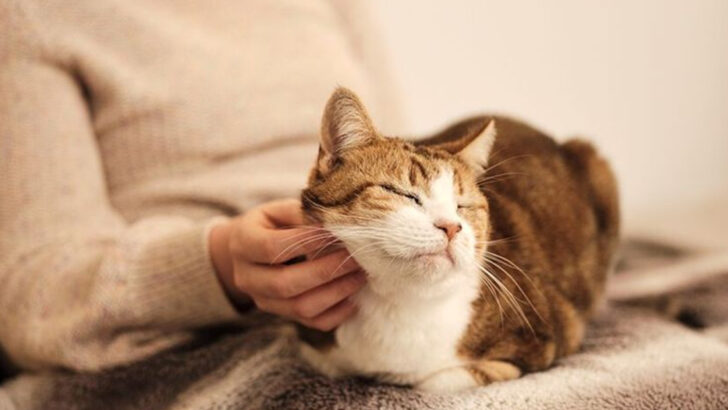Fear doesn’t always hiss—it hides, flinches, and trembles in silence.
When a cat has been through trauma, their world shrinks. Every sound is a threat. Every shadow looms too large. Trust becomes a distant memory.
But healing is possible. And it starts with you.
From soft touches to quiet routines, there are kind, gentle ways to show a frightened feline that the storm is over. No force. No pressure. Just patience, warmth, and a whole lot of love.
These 14 methods aren’t magic—but to a cat in pain, they might just feel like it.
Create a Safe Space

Imagine a warm, inviting nook filled with soft blankets and plush toys. Creating a dedicated safe space for your traumatized cat is a vital first step. Choose a quiet corner where your feline friend can retreat from the hustle and bustle. This sanctuary should be stocked with comforting items like their favorite toys and a cozy bed.
In this haven, your cat can relax and observe their surroundings at their own pace. The familiarity of their own scent will further help in reducing anxiety, allowing them to feel secure and at ease.
Regular Feeding Schedule

Consistency is a comforting balm for anxious cats. Establishing a regular feeding schedule ensures your cat knows when to expect meals, providing a reassuring routine. Offer nutritious food in a quiet area where they feel comfortable.
Over time, this predictable pattern can help build trust and stability. The rhythmic nature of meal times not only nourishes their body but also fosters emotional security. With each meal, your cat will associate you with care and safety, contributing to their gradual healing process.
Gentle Playtime
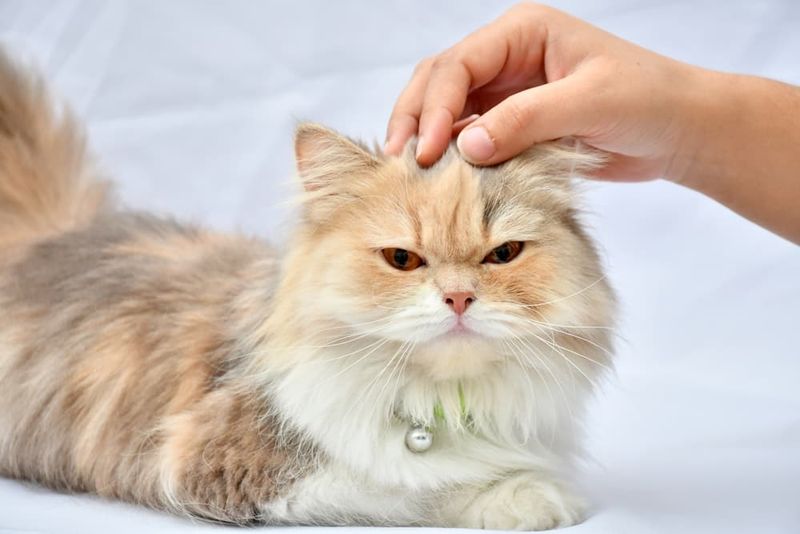
Engaging your cat in gentle playtime can be both therapeutic and enjoyable. Choose toys that encourage natural feline behaviors, like feather wands or small balls. These activities not only provide mental stimulation but also help rebuild confidence.
Keep the play sessions short and sweet to avoid overwhelming your cat. This fun interaction can strengthen your bond, showing them that humans can be trusted companions. Over time, as your cat becomes more comfortable, you’ll notice an increase in their playful curiosity and a decrease in anxiety.
Use of Pheromone Diffusers
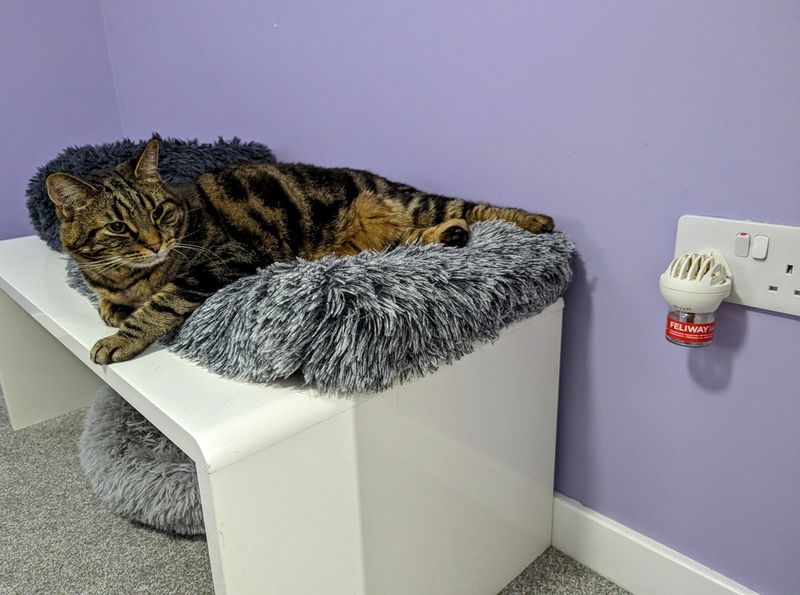
Pheromone diffusers mimic the natural comforting scents that cats associate with safety and well-being. These devices can be a game-changer for a traumatized cat. Simply plug one into a room your cat frequents.
As the diffuser releases calming pheromones into the air, your cat may start to feel more relaxed. This subtle influence can ease tension and reduce stress-related behaviors, making your home a more harmonious place for your feline friend.
Quiet Time Together

Sitting quietly with your cat, offering them gentle companionship without demands, can be incredibly soothing. Allow your cat to approach at their own pace; your presence should be non-intrusive and calm.
This quiet bonding time helps reassure them that they’re in a safe environment. Even without words, your cat will appreciate the peaceful energy, which can strengthen trust over time. This simple act of togetherness can work wonders for their emotional healing.
Routine Veterinary Care
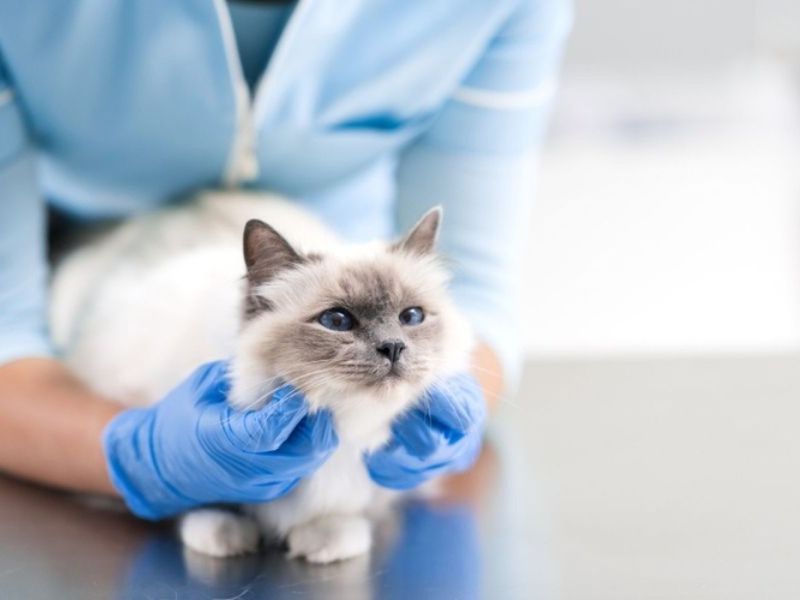
Regular check-ups with a veterinarian are crucial. These visits ensure that your cat is healthy and that any underlying medical issues are addressed promptly. A gentle, understanding vet can make all the difference.
Discuss any concerns about your cat’s behavior or health with the vet, who can offer professional advice and support. Routine care not only prevents health problems but also adds a layer of security to your cat’s life, knowing that their well-being is prioritized.
Interactive Toys

Interactive toys, such as puzzle feeders, can be a delightful distraction for a traumatized cat. These toys challenge their mind and engage their natural hunting instincts, providing a sense of accomplishment.
As your cat learns to manipulate the toy to get treats, they gain confidence in their abilities. This mental exercise can be a positive outlet for stress and a fun way to stimulate their mind. Over time, these toys can help your cat become more engaged and less fearful.
Soft Music or Sounds
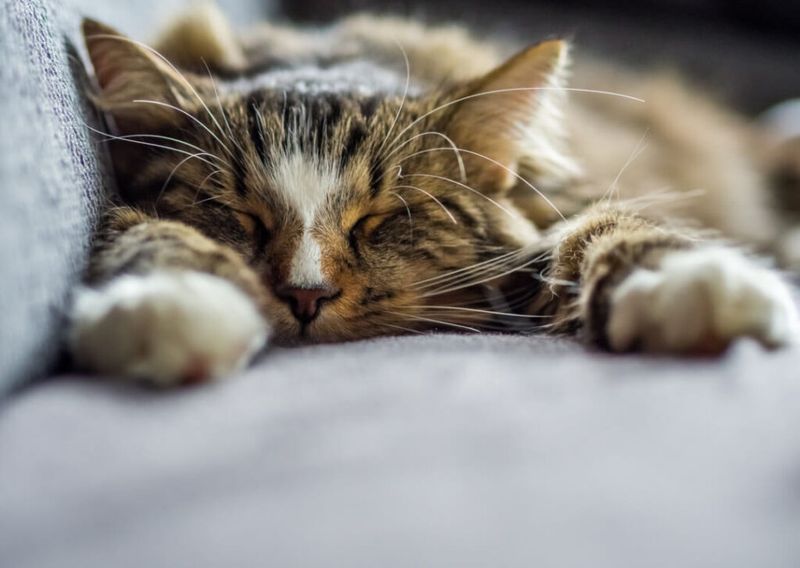
Soft, calming music or ambient sounds can create a serene atmosphere that soothes an anxious cat. Choose gentle melodies or nature sounds that are specifically designed to relax pets.
Playing these sounds at a low volume can mask unsettling noises from outside, providing a comforting auditory backdrop. Over time, your cat may begin to associate these sounds with safety and tranquility, further aiding in their emotional recovery.
Provide Hiding Spots
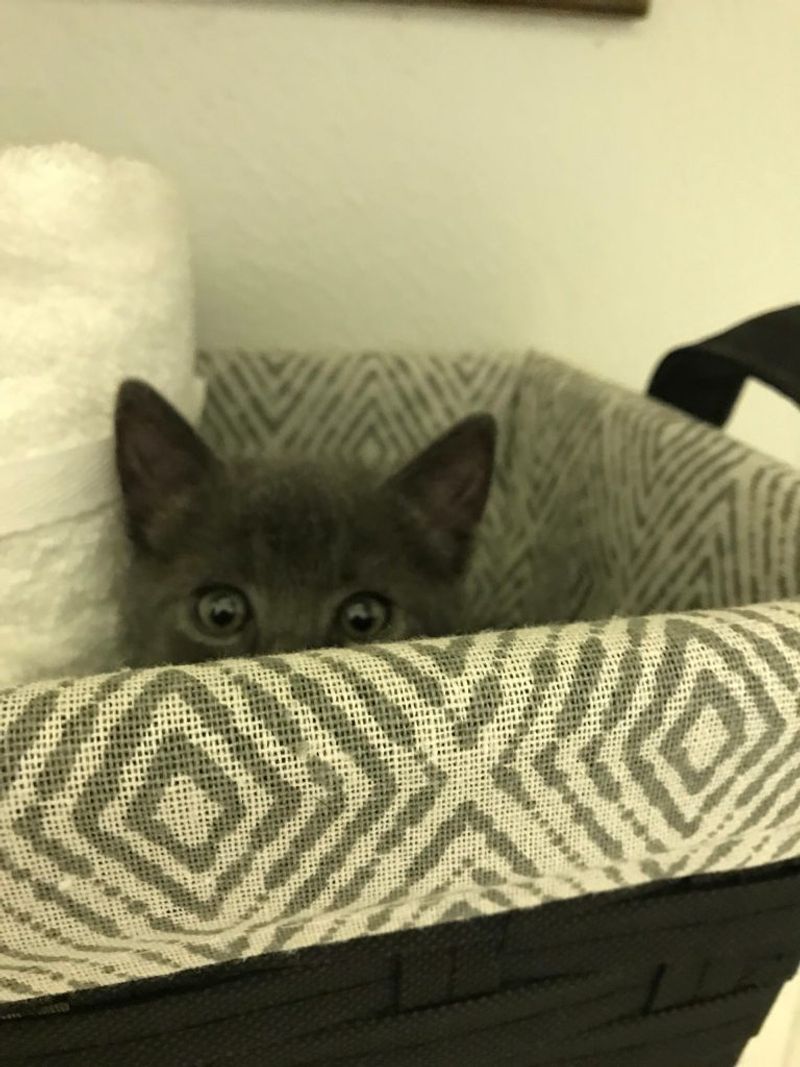
Hiding spots are a natural comfort for cats. Providing options like cat tunnels, cardboard boxes, or soft-covered beds allows your cat a place to retreat when they feel overwhelmed.
These spots offer a sense of security, helping them manage stress in their own way. Knowing they have a safe place to hide can encourage your cat to explore their environment more confidently, marking the first steps towards overcoming trauma.
Slow Introduction to New People
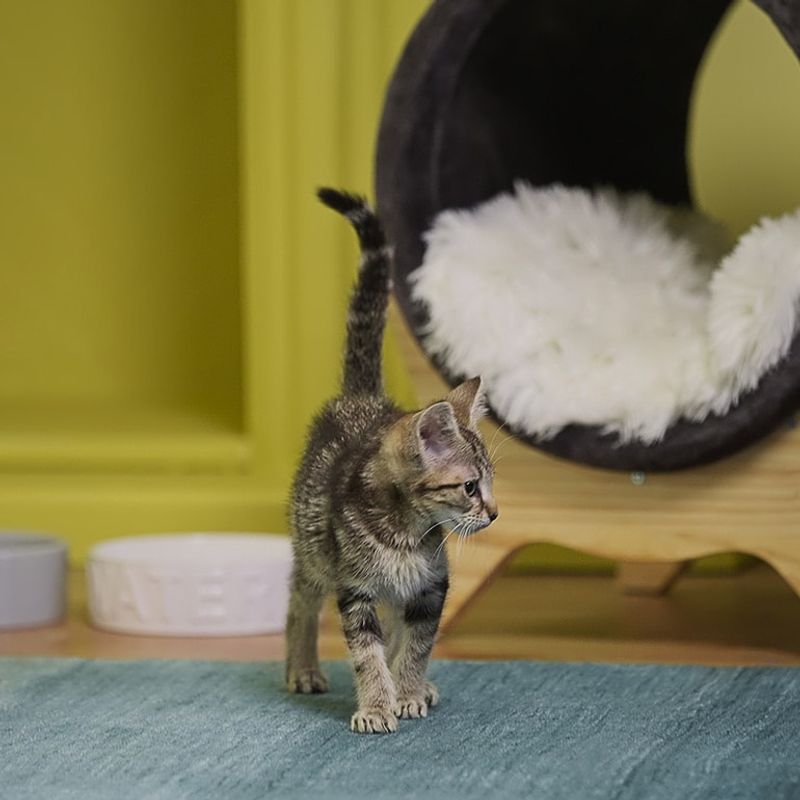
Introducing a traumatized cat to new people should be a slow, patient process. Allow your cat to approach on their own terms and encourage guests to remain seated and calm.
Provide treats or toys to create positive associations. Over time, these gentle introductions can help your cat build confidence and feel more secure around strangers, gradually expanding their comfort zone.
Use of Calming Herbs

Calming herbs such as catnip, chamomile, or valerian root can have a soothing effect on a traumatized cat. These herbs can be given as treats, used in toys, or brewed as a tea.
The natural calming properties of these herbs can help reduce anxiety and promote relaxation, providing a gentle path to emotional healing. It’s a simple, natural way to enhance their well-being and show them love and care.
Consistent Daily Routine

Cats thrive on routine, and a consistent daily schedule can significantly reduce anxiety. Keep feeding, playtime, and rest periods at the same time each day.
This reliability helps your cat feel secure in their environment, knowing what to expect. A structured day contributes to their sense of stability and safety, making their world a little less intimidating and a lot more comforting.
Positive Reinforcement
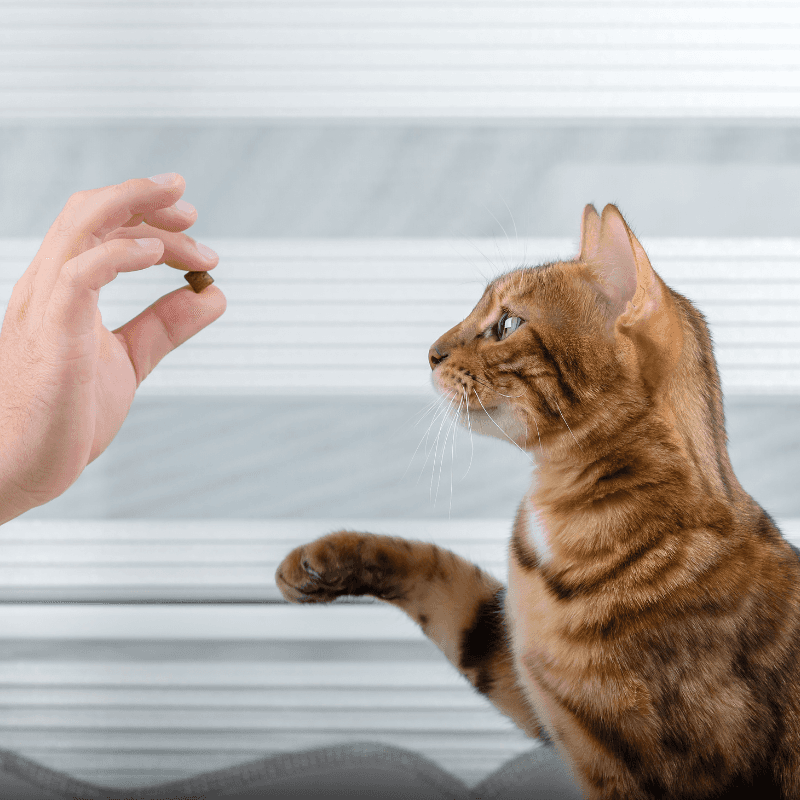
Positive reinforcement through treats and praise encourages desired behaviors. Reward your cat whenever they show bravery or curiosity, no matter how small the step.
This method builds trust and confidence, showing them that their efforts are noticed and appreciated. Over time, positive reinforcement can transform fearful behaviors into confident actions, helping your cat feel more secure in their environment.
Use of Texture and Touch
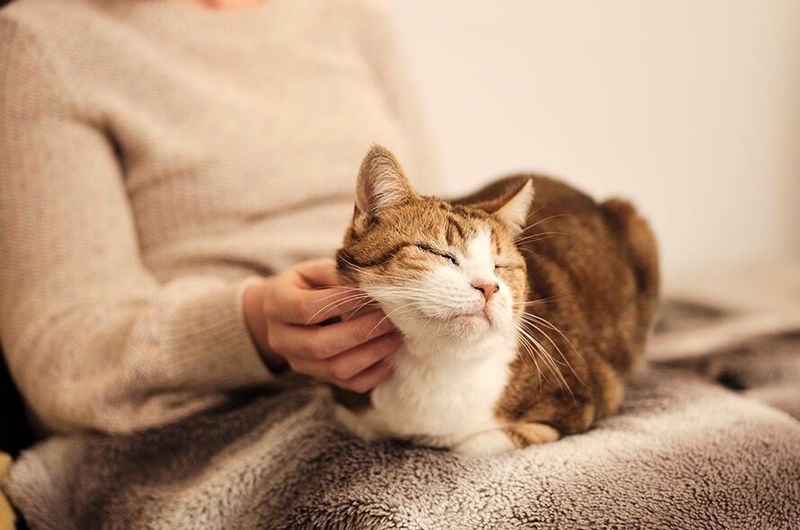
Texture and touch can play a pivotal role in comforting a traumatized cat. Use soft brushes and gentle petting to provide reassurance.
Each stroke can be a reminder of safety and love, helping them relax and enjoy human contact. Over time, this tactile approach can nurture trust and connection, making them feel cherished and secure in their surroundings.

